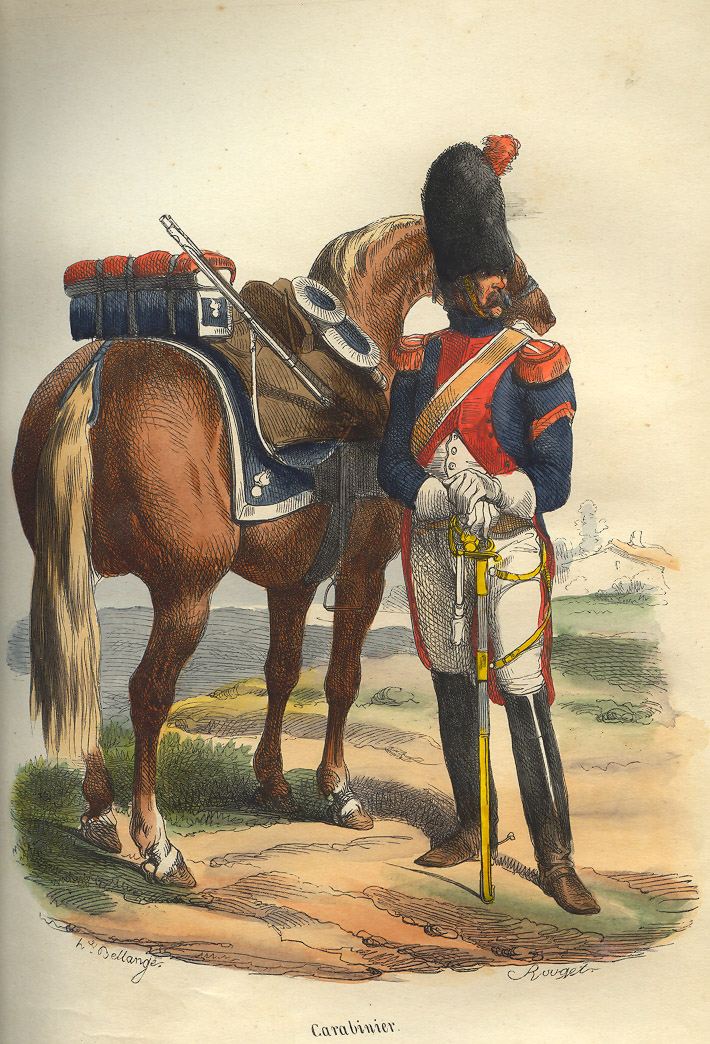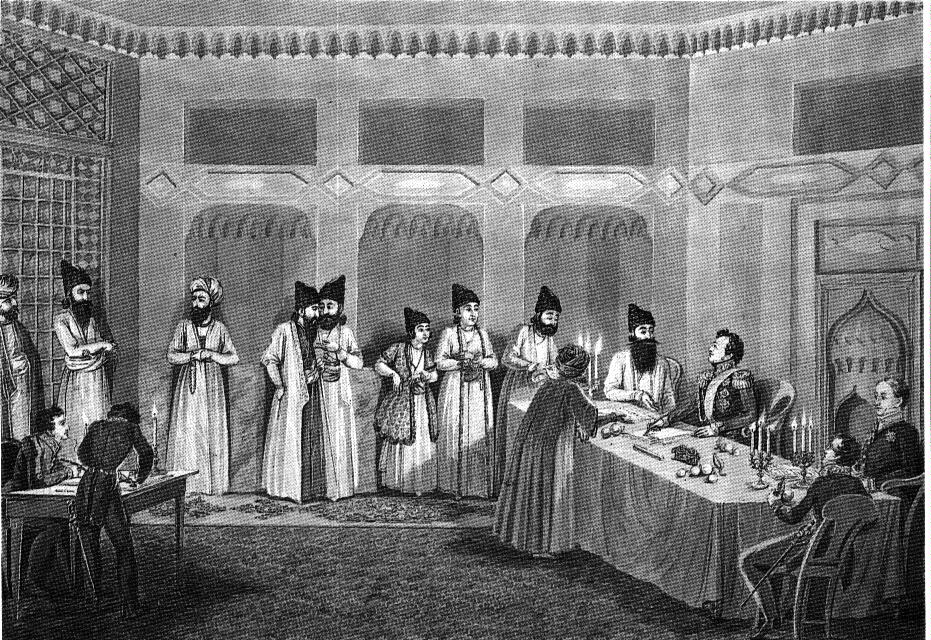|
Karim Khan Kangarli
Karim Khan Kangarli (Persian language, Persian: ''كريم خان کنگرلو,'' Azerbaijani language, Azerbaijani: Kərim xan Kəngərli) is the last khan of the Nakhichevan Khanate, Nakhichevan khanate, whose reign lasted intermittently from 1808 to 1827. After the abolition of the Nakhichevan khanate in 1828 the governors of Nakhichevan, who were under the rule of the Russian Empire was appointed Ehsan Khan Nakhichevansky, Ehsan Khan. Origin Karim Khan was descended from the Kangarli tribe. From the end of the 18th century to the present day he is called the brother, then the nephew and sometimes the cousin of Kalb-Ali Khan Kangarlu, Kalb-Ali Khan. It is known from the Tbilisi, Tiflis archive that the son of Karim Khan named Imam Qoli Khan married the granddaughter of Heydar Qoli KhanTelli-Begum. One of the khans Jafar Qoli Khan is sometimes also written as the native or cousin of Kalb-Ali Khan. From the very beginning, the customs of Kangarli confused Russian researchers, si ... [...More Info...] [...Related Items...] OR: [Wikipedia] [Google] [Baidu] |
Nakhichevan Khanate
The Nakhichevan Khanate ( fa, خانات نخجوان, translit=Khānāt-e Nakhchevān; Azerbaijani:ناخچیوان خانلیغی,Naxçıvan xanlığı; hy, Նախիջեւանի խանութիւն, translit=Naxijewani xanowt'iwn) was a khanate that was established in Afsharid Persia in 1747. The territory of the khanate corresponded to most of the present-day Nakhchivan Autonomous Republic and Vayots Dzor Province of present-day Armenia. It was named after its chief settlement, the town of Nakhchivan. History Until the demise of the Safavid Empire, Nakhchivan remained as an administrative jurisdiction of the Erivan Province (also known as Chokhur-e Sa'd). Shortly after the recapture of Yerevan in 1604 during the Ottoman–Safavid War of 1603–1618, then incumbent king (shah) Abbas I (r. 1588–1620) appointed as its new governor Cheragh Sultan Ustajlu, who, after his brief tenure, was succeeded by Maqsud Sultan. Maqsud Sultan was a military commander who hailed from the ... [...More Info...] [...Related Items...] OR: [Wikipedia] [Google] [Baidu] |
Karadagh Khanate
Karadagh Khanate (), was a khanate established in the 18th century, with its capital at Ahar. Khanate The khanate was founded in 1747 by Kazim khan Karadakhlu as an independent entity. Its territory had bordered with Talysh to east, Ardabil, Tabriz to south, Khoy to west, Nakhchivan, Karabagh and Javad khanates to north. Khanate's territory consisted mostly of Ungut, Karmaduz, Chalabiyan, Keyvan, Arazbar, Dizmar, Uzumdil, Hasanob, Kalaybar, Huseyneyli, Yaft, Garajurru, Dodanga, Chardanga, Dikla, Badbostan, Horat mahals. The founder Kazim khan pursued a prudent policy in regard to the neighboring feudal lords. He was more engaged in internal affairs and constructions, built several public buildings in khanate's capital Ahar. Khanate was under political dependence of Karabagh khanate for some period. In 1761 it was conquered by Karim Khan Zand and in 1791 by Mohammad Khan Qajar. In 1808 the khanate was finally disestablished. Rulers # Kazim khan — 1748-1752 #Mustafakuli k ... [...More Info...] [...Related Items...] OR: [Wikipedia] [Google] [Baidu] |
Carabinier
A carabinier (also sometimes spelled carabineer or carbineer) is in principle a soldier armed with a carbine. A carbiniere is a carabiniere musket or rifle and were commonplace by the beginning of the Napoleonic Wars in Europe. The word is derived from the identical French word ''carabinier''. Historically, carabiniers were generally (but not always) horse soldiers. The carbine was considered a more appropriate firearm for a horseman than a full-length musket, since it was lighter and easier to handle while on horseback. Light infantry sometimes carried carbines because they are less encumbering when moving rapidly, especially through vegetation, but in most armies the tendency was to equip light infantry with longer-range weapons such as rifles rather than shorter-range weapons such as carbines. In Italy and Spain, carbines were considered suitable equipment for soldiers with policing roles, so the term ''carabinier'' evolved to sometimes denote gendarmes and border guards ... [...More Info...] [...Related Items...] OR: [Wikipedia] [Google] [Baidu] |
Garadaghly, Nagorno-Karabakh
Garadaghly ( az, Qaradağlı) is a village in the Khojavend District of Azerbaijan, in the disputed region of Nagorno-Karabakh. The village had an Azerbaijani-majority population prior to their expulsion during the First Nagorno-Karabakh War. History During the Soviet period, the village was part of the Martuni District of the Nagorno-Karabakh Autonomous Oblast. In early February 1992, during the First Nagorno-Karabakh War, Armenian forces captured the village as well as the villages of Malibeyli ) and Aghdaban. Their inhabitants were expelled, resulting in the death of at least 99 civilians and 140 injuries. The attack on the village resulted in the deaths of more than 20 people and the injuries of 15 others. According to the State of the Republic of Azerbaijan on Prisoners of War, Hostages, and Missing Persons, 26 citizens of Azerbaijan have been reported missing since Armenian forces captured the village. Following the First Nagorno-Karabakh War, the village has b ... [...More Info...] [...Related Items...] OR: [Wikipedia] [Google] [Baidu] |
Citadel
A citadel is the core fortified area of a town or city. It may be a castle, fortress, or fortified center. The term is a diminutive of "city", meaning "little city", because it is a smaller part of the city of which it is the defensive core. In a fortification with bastions, the citadel is the strongest part of the system, sometimes well inside the outer walls and bastions, but often forming part of the outer wall for the sake of economy. It is positioned to be the last line of defence, should the enemy breach the other components of the fortification system. The functions of the police and the army, as well as the army barracks were developed in the citadel. History 3300–1300 BC Some of the oldest known structures which have served as citadels were built by the Indus Valley civilisation, where citadels represented a centralised authority. Citadels in Indus Valley were almost 12 meters tall. The purpose of these structures, however, remains debated. Though the structures foun ... [...More Info...] [...Related Items...] OR: [Wikipedia] [Google] [Baidu] |
Nail (other)
Nail or Nails may refer to: In biology * Nail (anatomy), toughened protective protein-keratin (known as alpha-keratin, also found in hair) at the end of an animal digit, such as fingernail * Nail (beak), a plate of hard horny tissue at the tip of some bird beaks Objects * Nail (fastener), the pin-shaped fastener used in engineering, woodworking and construction ** Nail (relic), used in the crucifixion of Christ * The Exchange nails, bronze tables outside of The Exchange, Bristol Arts and entertainment * '' JLA: The Nail series'', a 1998 three-issue comic book miniseries * ''Nail'', a 1985 album by Scraping Foetus Off The Wheel * '' Nails'', a 1992 American TV movie * Nails (band), an American powerviolence band founded 2009 * Nine Inch Nails, an American industrial rock band founded 1988 * The Nails, an American new wave band founded 1976 as The Ravers (name change 1977) People * Nail (given name), a list of people with the given name Nail * Nail (surname), a list of people ... [...More Info...] [...Related Items...] OR: [Wikipedia] [Google] [Baidu] |
Ordubad
Ordubad is the second largest city of Azerbaijan's Nakhchivan Autonomous Republic and the capital of an eponymous district. Ordubad is a medieval city of the Caucasus and in its current capacity of a town was founded in the 18th century. The town is divided into five districts: Ambaras, Kurdtatal, Mingis, Sarshahar, and Uch. Ordubad is known as the “pearl” of Nakhchivan and is well known for its exports of fruits and spices, and for its cuisine. Etymology ''Ordubad'' is a name of Turco-Persian origin and means "''army town''", from Turkic ''ordu'' ("army") and Persian ''bad'' ("town"), which implies that the city was founded during the period of the Mongol or the ensuing Il-Khanid rule. The historian and geographer Hamdallah Mustawfi (1281–1349) mentions Ordubad in the mid-14th century as "a provincial town, one of the five towns making up the ''tumān'' of Nakhchivan, with fine gardens, and producing good grapes, corn and cotton". French traveller Jean Saint-Martin ment ... [...More Info...] [...Related Items...] OR: [Wikipedia] [Google] [Baidu] |
Horse Artillery
Horse artillery was a type of light, fast-moving, and fast-firing artillery which provided highly mobile fire support, especially to cavalry units. Horse artillery units existed in armies in Europe, the Americas, and Asia, from the early 17th to the mid-20th century. A precursor of modern self-propelled artillery, it consisted of light cannons or howitzers attached to light but sturdy two-wheeled carriages called caissons or limbers, with the individual crewmen riding on horses. This was in contrast to the rest of the field artillery, which were also horse-drawn but whose gunners were normally transported seated on the gun carriage, wagons or limbers. Tactics Once in position, horse artillery crews were trained to quickly dismount, deploy or unlimber their guns (detach them from their caissons), then rapidly fire grapeshot, shells or round shot at the enemy. They could then just as rapidly limber-up (reattach the guns to the caissons), remount, and be ready to move to a new pos ... [...More Info...] [...Related Items...] OR: [Wikipedia] [Google] [Baidu] |
Cossacks
The Cossacks , es, cosaco , et, Kasakad, cazacii , fi, Kasakat, cazacii , french: cosaques , hu, kozákok, cazacii , it, cosacchi , orv, коза́ки, pl, Kozacy , pt, cossacos , ro, cazaci , russian: казаки́ or , sk, kozáci , uk, козаки́ are a predominantly East Slavic Orthodox Christian people originating in the Pontic–Caspian steppe of Ukraine and southern Russia. Historically, they were a semi-nomadic and semi-militarized people, who, while under the nominal suzerainty of various Eastern European states at the time, were allowed a great degree of self-governance in exchange for military service. Although numerous linguistic and religious groups came together to form the Cossacks, most of them coalesced and became East Slavic-speaking Orthodox Christians. The Cossacks were particularly noted for holding democratic traditions. The rulers of the Polish-Lithuanian Commonwealth and Russian Empire endowed Cossacks with certain sp ... [...More Info...] [...Related Items...] OR: [Wikipedia] [Google] [Baidu] |
Ivan Paskevich
Count Ivan Fyodorovich Paskevich-Erevansky, Serene Prince of Warsaw (russian: Ива́н Фёдорович Паске́вич-Эриванский, светлейший князь Варшавский, tr. ; – ) was an Imperial Russian military leader of Cossack origin who was the Namiestnik of Poland. Paskevich is known for leading Russian forces in Poland during the November uprising The November Uprising (1830–31), also known as the Polish–Russian War 1830–31 or the Cadet Revolution, was an armed rebellion in the heartland of partitioned Poland against the Russian Empire. The uprising began on 29 November 1830 in W ... and for a series of leadership roles throughout the early and mid-19th century, such as the Russo-Persian War (1826–28) and the beginning phase of the Crimean War. Paskevich started as an officer during the Napoleonic wars serving in the battles of Battle of Austerlitz, Austerlitz and Battle of Borodino, Borodino. After the war, he was a le ... [...More Info...] [...Related Items...] OR: [Wikipedia] [Google] [Baidu] |
Abbasabad (fortress)
Abbasabad was a fortress of strategic importance for the defense of the Nakhichevan Khanate. It was built with the help of French engineers by Abbas Mirza in 1810. He appointed Ehsan Khan Kangarlu as commander of the fortress in 1827, during the Russo-Persian War of 1826–1828. During a siege by the Russians, Ehsan Khan secretly arranged for the gates of the fortress to be opened to the Russian commander General Ivan Paskevich Count Ivan Fyodorovich Paskevich-Erevansky, Serene Prince of Warsaw (russian: Ива́н Фёдорович Паске́вич-Эриванский, светлейший князь Варшавский, tr. ; – ) was an Imperial Russian mi ... on 22 July 1827. During the Russian rule the fortress was abandoned and fell into ruin. The ruins remained until 1970s, when they were buried under the water during construction of the Aras water reservoir. References External links No. 6497 Agreement concerning the settlement of frontier and finan ... [...More Info...] [...Related Items...] OR: [Wikipedia] [Google] [Baidu] |

.jpg)




